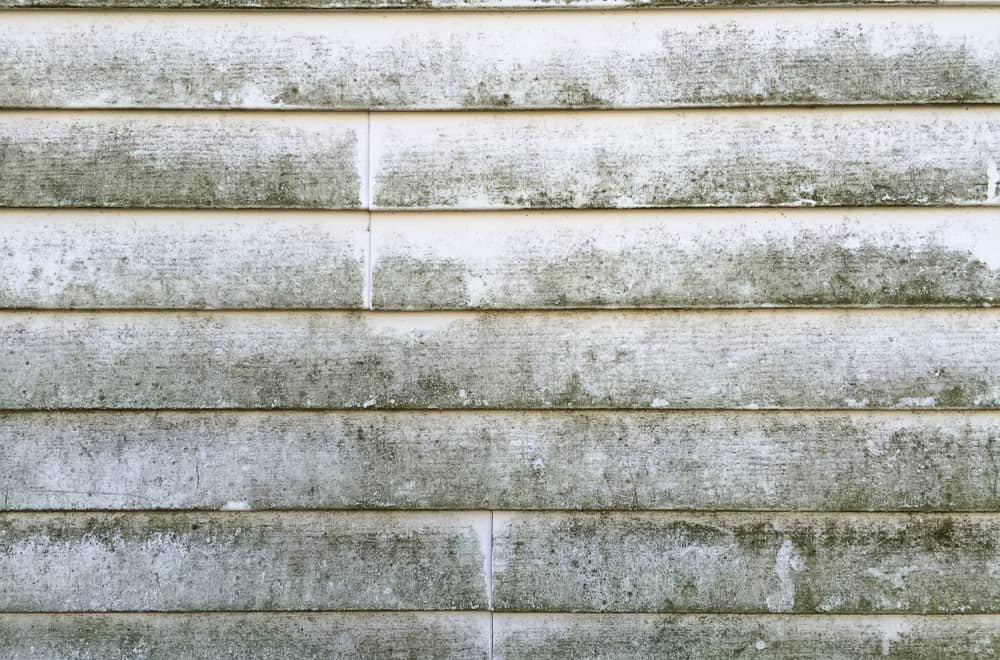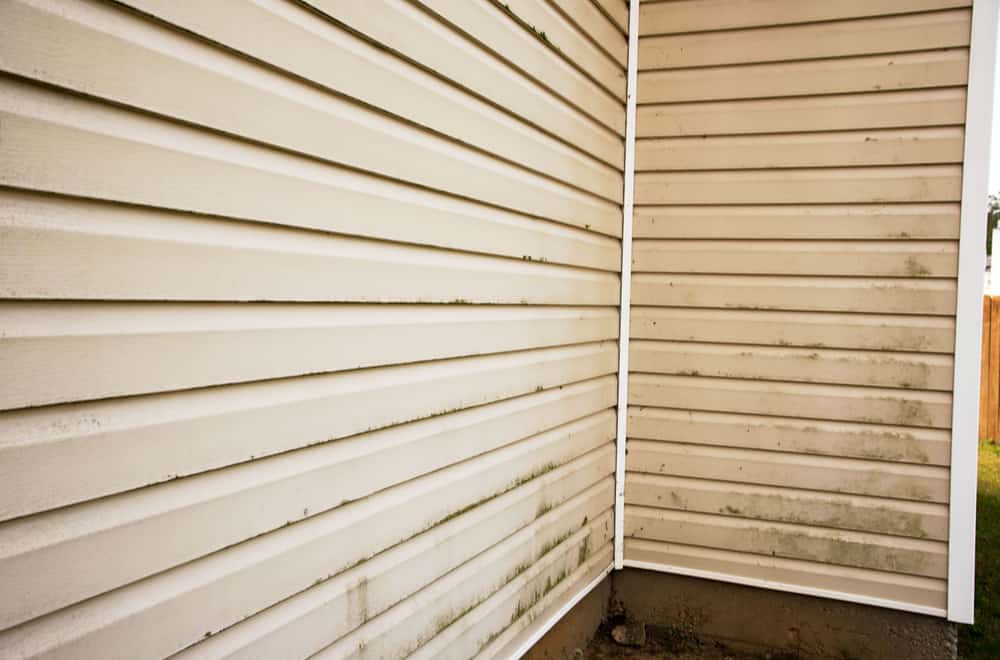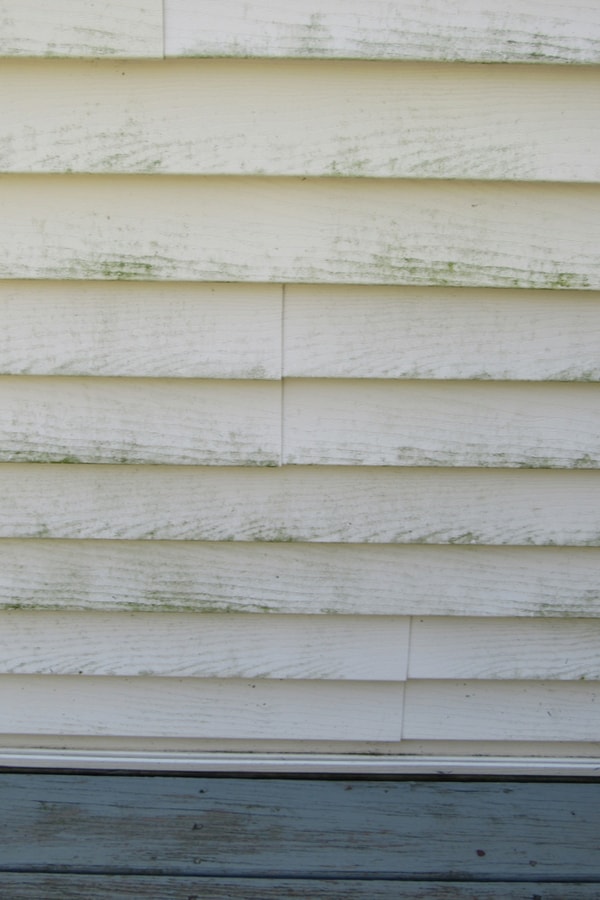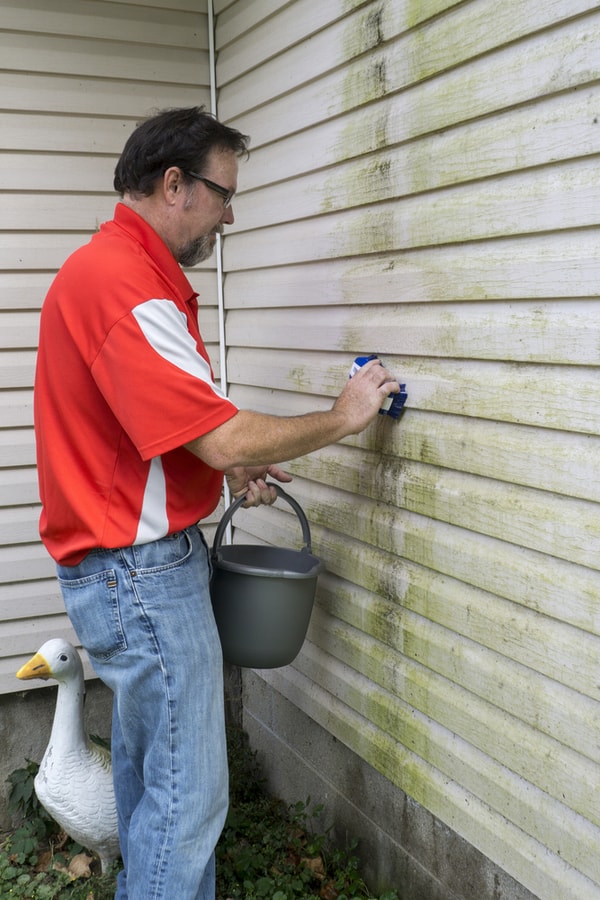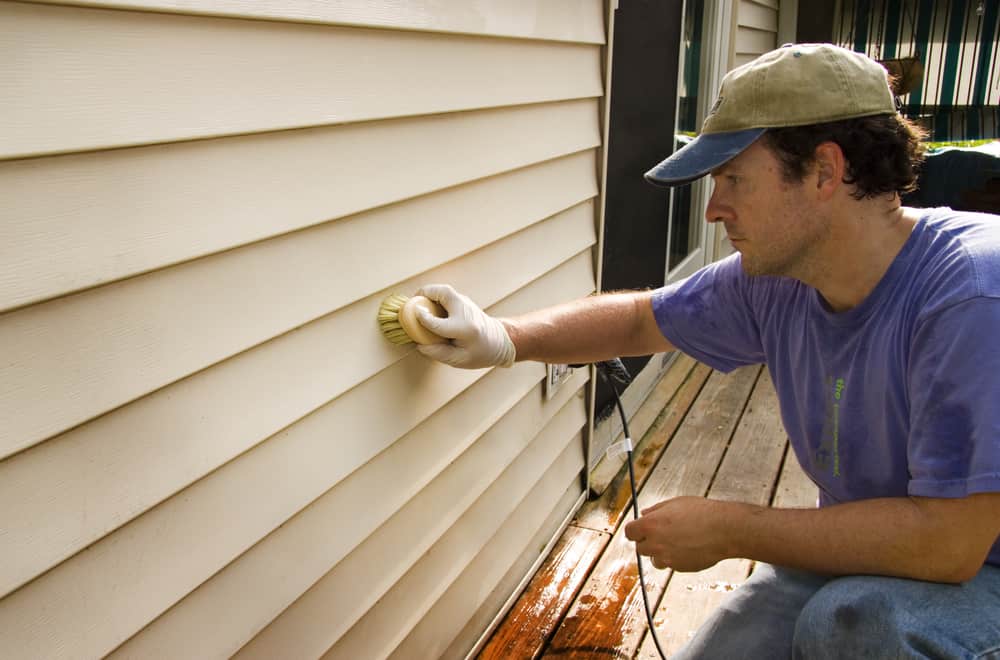Vinyl sidings are probably one of the most loved exterior siding options. While not as prone as wood sidings, you might still notice mildew growth on vinyl sidings every now and then.
So, if you’re tired of this mildew issue on your sidings and are trying to figure out what might have gone wrong or what you can do better, you’re at the right place!
Not only we’ll dissect why mildews might have made themselves home at your vinyl sidings, but we’ll also discuss how to get rid of them effectively and prevent them from regrowing. So, what are we waiting for? Let’s get started!
Table of Contents
What is mildew?
You might have noticed a whitish coat of hyphal structure over shady and moist places on your siding. These minute fungi are called mildew. These pesty structures often form around moisture-prone and dark areas.
However, the good news is that mildews are completely removable. And you don’t even need costly commercial products; simple DIY cleaners will do the job. Read on to find more about why mildew forms and how to get rid of them.
Is it mold or mildew?
Now that we know what mildew is let’s discuss if it is any different from mold. Many homeowners believe that both mold and mildew are the same. But who could blame them? After all, these two invaders share many things in common, including our detestation toward them.
While both mold and mildew are fungi, there are a few differences between them. Mildew is often flat and gradually changes its color from whitish to darker colors such as gray or brown. With time, these fungal structures turn powdery.
On the other hand, molds are fuzzy in structure and often exhibit darker colors such as red, green, or black. Moreover, unlike mildew, molds don’t turn powdery.
What does Mildew Love?
We’re done with introductions and characterizations. Now, let’s discuss the factors that are favorable for mildew growth are.
1. Moisture
Be it plants or animals, life without water is impossible. The same is the case for mildew. Mildew loves moisture and grows rapidly on moist and damp areas. In such humid conditions, mildew proliferates and spreads rapidly.
2. Darkness
In dark and shady regions, moisture cannot evaporate quickly, thus, acting as a breeding ground for molds and mildews.
3. Organic matters
Organic matters such as dust and plant sap are like pizzas for mildew. Especially when these compounds are combined with moisture, there is no doubt that the area will be infested with mildew sooner or later.
Why Does Mildew Grow on Vinyl Siding?
But wait, isn’t vinyl siding waterproof? Yes, vinyl sidings are waterproof, i.e., these sidings do not imbibe water as wood does.
Nevertheless, moisture can still sit on the vinyl surface and seep through cracks and crevices. Here’s a list of three major factors that result in mildew growth on vinyl siding.
1. Accumulation of dirt and sugars on sidings
If you tease mildews with their yummy treats – dirt, and sugars, they surely are going to accept the invitation.
You might be thinking, where does sugar come from. Trees, over time, secrete flimsy sugar/sap aerosols, which might end up on your vinyl sidings. With enough accumulation, the sidings start feeling sticky and help proliferate mildew.
2. Lack of sunlight
When sunlight doesn’t directly shine on the siding walls, the moisture will evaporate very slowly relatively. This trapped moisture, in combination with dirt and organic matters, becomes an acceleratory factor for mildew growth.
You might have noticed the sidings on the wall not getting enough sunlight falling victim to this issue. Look for mildews on vinyl sidings that aren’t getting direct sunlight exposure due to blockage from trees and shrubs. If you witness such problems, it’s time for you to trim your plants.
3. Trapped moisture behind or within the sidings
Moisture might get trapped behind or under vinyl sidings due to various reasons. If your roof gutters are clogged, water might be overflowing and dripping downwards over the sliding. Broken drain pipes might also be the reason why the siding is always wet, giving rise to mildew problems.
Likewise, moisture also might seep through cracks in butt-joint and other crevices. And if homeowners have made the mistake of not attaching a layer of moisture barrier underneath the vinyl siding layer during installation, the mildew problem will be even worse.
Improper pressure washing can also result in moisture trapping between vinyl sidings. Ventilation ducts can also be another culprit for encouraging mold growth on your sidings.
Ensure that the steam coming out of the ducts isn’t trapped above the vents. Moreover, make sure that no tall trees are blocking the sunlight on the vent area. Rapid evaporation of the moisture in this area is essential to preventing mildew growth.
How to Remove Mildew from Vinyl Sidings?
Removing mildew from vinyl siding is not something that you can delay. It poses a real danger if it has spread inside vinyl sidings, as the organic matter under sidings can rot over time due to moisture issues and mildew growth. So, the sooner the removal, the better!
So, how do we remove stubborn mildew and the stains it leaves behind on vinyl sidings? Well, unless the entire exterior is full of big mildew patches, you can easily remove the mildew stains using simple DIY solutions. Let’s unveil these wonder cleaners!
1. Oxygen bleach
Many homeowners tend to opt for chlorine bleach for cleaning exterior vinyl sidings. However, as choline tends to evaporate quite quickly, not being able to deeply attack mildew, chlorine bleach will probably not work as expected and can lead to mildew regrowth despite cleaning the area thoroughly.
The better option to attack stubborn mildew is to use oxygen bleach to attack the root of the problem, removing it once and for all. Moreover, unlike chlorine bleach, oxygen bleach is gentle to plants and clothing and also doesn’t remove paint from the sidings.
To prepare the oxygen bleach solution, dissolve powdered oxygen bleach to warm water. Apply to the affected area and let it work for about 10 minutes. Gently scrub with a soft-bristled brush or a cloth and wash the area.
2. 30% white vinegar solution
Another awesome mildew cleaning ingredient is white vinegar. Mix 30% white vinegar to 70% water to create an effective cleaning solution.
Scrub the mildew stains with this DIY cleaning solution and let it sit for a few minutes before washing the area. Feel free to repeat the process until the area is free of mildew.
3. Professional cleaning services
If mildew growth is severe on the sidings and you’re afraid that only exterior cleaning isn’t enough, seek professional cleaning services for deep cleaning.
Even if there are some underlying issues, the experts can pinpoint them for your ease. Moreover, when cleaned with professional cleaning products, chances of mildew regrowth on the area will decrease significantly, at least for some time.
How to Prevent Mildew Growth on Vinyl Siding?
Cleaning mildew from vinyl siding, though not a daunting task, can be annoying. And we’re certain that you’re willing to do everything in your power to prevent these devils from showing up again. Here are a few tips that might come in handy for you.
1. Clean your sidings thoroughly several times a year
Cleaning and taking care of only the interior of your home is a little unfair, don’t you think? Many homeowners only clean their sidings once or twice a year.
While it may be enough, you must consider scheduling cleaning programs frequently if the sidings are prone to suffering from molds and mildews.
One clever option can be only cleaning dirt or tree sap-prone areas of your sidings frequently while performing a deep clean only a few times a year.
2. Repair broken pipes
Look for broken drain pipes which might be contributing to moisture build-up on your vinyl siding surface. If you notice any, fix the issue as soon as possible.
3. Trim nearby trees and shrubs
Huge trees and shrubs might provide unwanted shade to your vinyl sidings. So, if you notice dampness in such shady areas, trim the surrounding plants short in order to avoid future mold and mildew problems.
4. Ensure the gutters are functional
Clogged gutters are another culprit of wetting your vinyl sidings. If you notice water dripping downwards from the gutter, check your gutter, and unclog or clean them if necessary.
5. Use pressure washer properly
As we’ve mentioned before, improper pressure washer use can cause plenty of unwanted problems, one of them being moisture issues.
The high pressure might end up forcing water through cracks and crevices and in between the vinyl sidings. So, always use a pressure washer mindfully and if you’re not confident enough to handle one, take help from a knowledgeable person.
Summary
Now you know what are the culprits that are secretly helping the mildews proliferate and spread on your sidings, don’t you?
But worry not! With these effective cleaning options and preventive techniques, these pesty little fungi will not be able to bother you anymore. If you have any more queries regarding mildews on vinyl sidings, we’re always here to help you.
